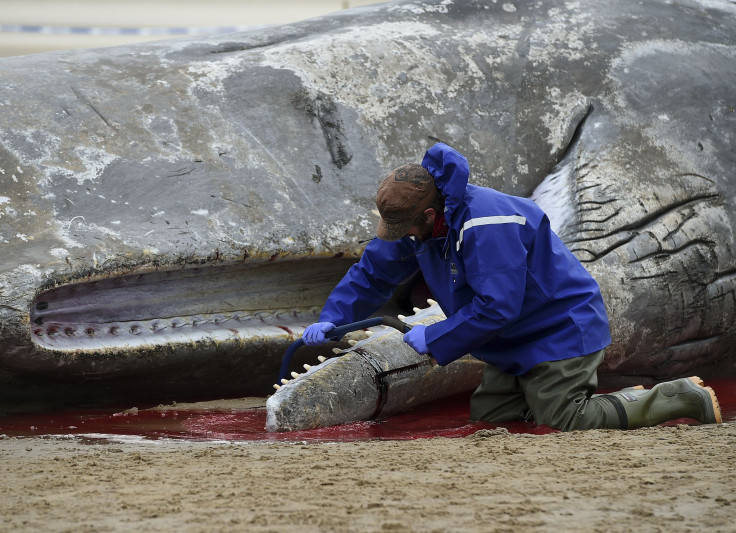Ambergris: Try and find whale vomit; it may win you $100,000

The Middleton Sands of Lancashire turned out to be a goldmine for Gary and Angela Williams on Sunday. They were strolling, enjoying the beach and sand near Morecambe Bay when the smell of rotting fish entered their nostrils. Unlike some, they decided to follow the stench and came across a smelly rubbery rock on the beach.
Now, the couple are celebrating their find as the smell was from ambergris, whale vomit, worth $100,000. They had once seen how whale vomit looks like in a newspaper and hence decided not to look the other way. Ironically, whale vomit is used in the manufacture of perfumes and is a precious substance.
“It was a bit of a shock. It was down a section of the beach where no one really walks. It smells too bad though. It’s a very distinctive smell, like a cross between squid and farmyard manure. It feels like a rock hard rubber ball. Its texture is like wax, like a candle. When you touch it you get wax sticking to your fingers,” Gary told the Mirror.
The couple from Overton took the piece of whale vomit to their home after wrapping the lump in a scarf. In 2013, another whale vomit lump was found near Morecambe which was valued at $220,000. However, this lump was weighed at 1.57kg when Gary weighed it on his fishing scale.
The lump is a bit smaller than a rugby ball and the Williams are in talks with potential buyers. They have put it in safe storage and have already consulted two experts, one from New Zealand and one from France. The Williams often hit the beach for unusual items. Gary is looking to buy his dream static caravan with the money he receives by selling the vomit off.
Whale vomit is known as “floating gold” because it is rare and is of high value to perfume makers. Ambergris takes years to form and is the hardened intestinal slurry of a sperm whale, writes News.com.au. It is believed that ambergris protects the whale from sharp and hard objects it swallows.
Interestingly, whale vomit floats in the ocean for years before transforming into a smooth and grey lump from exposure to salt and water.





















